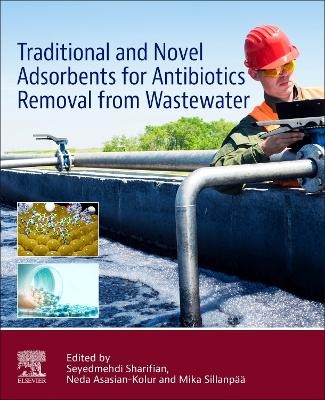
Traditional and Novel Adsorbents for Antibiotics Removal from Wastewater
Elsevier - Health Sciences Division (Verlag)
978-0-443-19211-1 (ISBN)
In addition, the book covers biological microorganisms that have been used to remove antibiotics from wastewater and presents biopolymers, biowaste and living cells potentially and practically suitable for this purpose. For all adsorbents, the book explains preparation methods, main properties, modification techniques to increase antibiotic removal efficiency, mechanisms in antibiotic removal, advantages and limitations. It also presents adsorption-desorption in batch and continuous mode, optimized operating parameters, kinetic and equilibrium adsorption, and regeneration studies.
Seyedmehdi Sharifian received his PhD in chemical engineering from the Vienna University of Technology and then worked as a postdoctoral researcher at the University of Tehran. From 2018 to 2022, he worked as an assistant professor at the same university. He was the head of the Sustainable and Green Chemical Processes Research Laboratory. Now he is a postdoctoral research associate at Purdue University. His research interest is generally in separation processes in chemical processes. One of his major research interests is wastewater treatment systems by adsorption and oxidation processes. In addition to being the author of numerous scientific papers, he is also a reviewer for many relevant journals, mainly in the areas of wastewater treatment, water quality, oxidation processes, and processing of biowaste into value-added products. Mika Sillanpää’s research work centers on chemical treatment in environmental engineering and environmental monitoring and analysis. The recent research focus has been on the resource recovery from waste streams. Sillanpää received his M.Sc. (Eng.) and D.Sc. (Eng.) degrees from the Aalto University where he also completed an MBA degree in 2013. Since 2000, he has been a full professor/adjunct professor at the University of Oulu, the University of Eastern Finland, the LUT University, the University of Eastern Finland and the University of Johannesburg. Neda Asasian-Kolur received her Ph.D. in Chemical Engineering from the Amirkabir University of Technology in 2013. She has been an assistant professor at the University of Tehran since 2017, and is currently working as a post-doc at Vienna University of Technology (TU Wien). She is the head of the adsorption research laboratory at the University of Tehran, and every year many graduates complete their studies under her supervision. To date, she has authored many peer-reviewed publications on environment-related topics. Her research interests include wastewater treatment, adsorption processes, preparation, surface functionalization, and characterization of adsorbents/catalysts for environmental purposes. She is the reviewer of many well-known journals in environmental chemistry research fields.
1. Adsorption: a reliable solution for emerging contaminants removal
2. Adsorption process of antibiotics by carbon-based adsorbents
3. Adsorption process of antibiotics by clay-based materials
4. Adsorption process of antibiotics by novel adsorbents
5. Biosorption process for antibiotics removal
6. Hybrid technologies including adsorption for antibiotics removal
| Erscheinungsdatum | 05.09.2023 |
|---|---|
| Verlagsort | Philadelphia |
| Sprache | englisch |
| Maße | 191 x 235 mm |
| Gewicht | 450 g |
| Themenwelt | Medizin / Pharmazie ► Medizinische Fachgebiete ► Pharmakologie / Pharmakotherapie |
| Naturwissenschaften ► Biologie ► Mikrobiologie / Immunologie | |
| Technik ► Umwelttechnik / Biotechnologie | |
| Wirtschaft | |
| ISBN-10 | 0-443-19211-1 / 0443192111 |
| ISBN-13 | 978-0-443-19211-1 / 9780443192111 |
| Zustand | Neuware |
| Haben Sie eine Frage zum Produkt? |
aus dem Bereich


